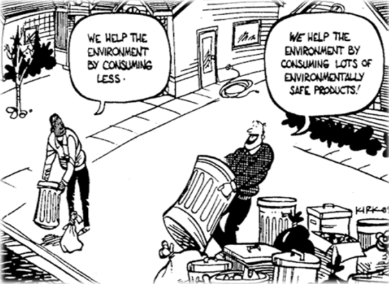The Cambridge dictionary defines the noun “label” as “a piece of paper or other material that gives you information about the object it is attached to.” An active social network user would explain us tags are one of the most famous ways people use to find content on Instagram, for example, therefore using the correct ones in your photos can increase your visibility, even your sales, and this is an interesting option, isn’t this? There is growing evidence about the importance of showing clear messages through labels, we cannot forget this aspect.

We explained you the meaning of nutrition labeling in food some time ago, so taking advantage of the fact that we are already aware of the importance of showing how much sugar is in our food as with choosing the right hashtag for our photos, what do you think if we know a little more about environmental labels?
With consumers becoming increasingly demanding, to declare the environmental behavior of products, that is, show their environmental profile through a label, can make a differentiation from competitors. The International Standards Organisation (ISO) proposed three categories of environmental labels according to the aspects covered and the rigor required to award the seal (and they are not trending topic at this moment).
Let’s see:
Type I: Eco-label. These claims are a voluntary, multiple-criteria based, third party program that awards a license that authorises the use of environmental labels on products, based on life cycle considerations. One of the most widely used systems is the Eco-label scheme and among the multitude of products and services that are eligible to be labeled are shower gels.
Type II: Self-declaration claims. These labels are based on self-declarations by manufacturers or retailers and provide information about an only single significant environmental impact. There are numerous examples of such claims, for example, the Möbius loop.
Type III. Environmental Product Declarations (EPDs). These claims consist of quantified product information based on life cycle impacts under several categories of parameters and presented in a form set and verified by a qualified third party, showing environmental impacts.
Now, visualize yourself in the aisle of your supermarket with an eco-labeled product in your hand, reading the phrase “better for the environment” and listening in your head a question “who has verified this, the same company that manufactures the product?”. It’s just not the case. Labeling generates controversy, we know this, so we take this opportunity to tell you that any company that seeks to obtain an eco-label type I or III must follow a rigorous and exhaustive process, which implies to carry out a complete Life Cycle Assessment and it will be necessary to verify all the calculations by a qualified third party. This implies these processes can on no account be branded as arbitrary and avoiding the green-washing is a commitment.
Of course, we encourage you to check it #youchoose.
- When “green” doesn’t come from doing an LCA, but only from a Pantone® colour - 1 August 2025
- Jeff Bezos reminded me of the importance of the carbon footprint - 17 September 2021
- Creating more liveable cities using nature - 13 September 2018
